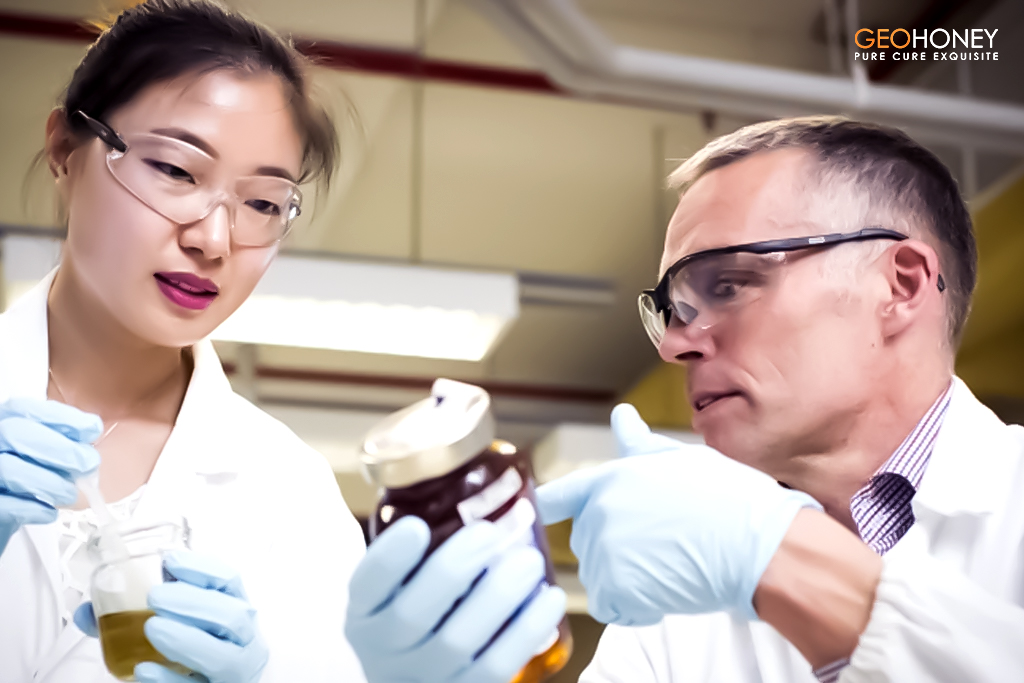- Tokyo: 22:22
- Singapore: 21:22
- Dubai: 17:22
- London: 13:22
- New York: 08:22
Are You Consuming Fake Honey? Know What's In Your Jar!

Honey is a natural sweetener made by the bees and is liked by many of us in our daily schedule. While searching for a sugar alternative, honey seems to be the best option, but as with many foods, not all honey is created equal. Several reports have proved that about 76% of the honey sold globally is fake!
Most people know that honey is a lot better sweetener than sugar; however, exploring honey at your nearby grocery store means wading through numerous fake honey choices. Most of the honey available in the market is without fundamental supplements and is actually unhealthy to the body.
According to the FDA, World Health Organization, or the European Commission, honey is natural when pollen is available. However, it isn't natural honey if the "liquid gold" doesn't contain pollen particles. This is because pollen particles help in knowing the origin and geography of the flowers.
Honey is the world's third most faked food. Given the therapeutic properties of honey, its utilization ascended during COVID lockdowns, and to adjust the requirement and supply; adulteration businesses evolved to bypass existing tests. A few companies have answered these as mere allegations and governmental issues, while some have yet to answer. However, the reality remains that food fraud stings the local producers and consumers the most.
So does it make any pattern? Pretty much every significant honey market has been tormented by this Chinese sugar. What is this sugar, you say? In general, fructose syrup gives a false negative result on stipulated testing procedures and is generally traded from China disguised as a paint pigment. So is it imperceptibly? No. It may be distinguished by specific labs utilizing the NMR (Nuclear Magnetic Resonance) test.
What Are the Different Types of Fake Honey?
(1) In the first place, there are those pure honey varieties, which have been processed to such a point that the only parts left of their natural state are the sweetness and sticky texture.
(2) Next are the honey sauces and syrups marked as honey fructose. These will generally be corn syrup with little honey added for flavor.
(3) Another common variety is sugar-free honey. Honey usually is high in sugar, which means that any sugar-free honey you find isn't honey at all. Except if you have clinical proof to go to this, pass it by; regardless of whether you require sugar-free options, this should be used cautiously.
(4) Also, some honey is named mixed honey. This implies that a portion of the product is unadulterated honey - usually, 30% and 70% - and the rest is high-fructose corn syrup.
(5) At last, some honey sellers think that unadulterated honey isn't sufficiently sweet, so they decide to add sugar-even entire pieces of rock sugar-to their jars of unadulterated honey, nullifying any medical advantages the honey could have offered.
While food adulteration may have failed to protect consumers from duplicity and organizations from unfair competition, the development of stringent regulations don’t; for instance, the Government of Canada presented the Food Policy for Canada in Budget 2019 under which $24.4 million were assigned to CFIA to crack down on food misrepresentation.
Also, it isn't exclusively on the shoulders of the Government to take care of your wellbeing; how about a little self-initiative. It is good to read the labels carefully and not buy the products that mention high fructose corn sugar, buy raw honey from a certified honey company, and perform quality tests to ensure the best honey quality.
According to Mr. Basem Barry, founder & CEO of Geohoney, the customers need to take self-initiatives and trust the food they eat. Also, the honey-producing companies should make sure that the food labeling must be accurate and not misleading in any way.




Yes, fake honey can be dangerous, so its better to use best brand. BTW nice blog!